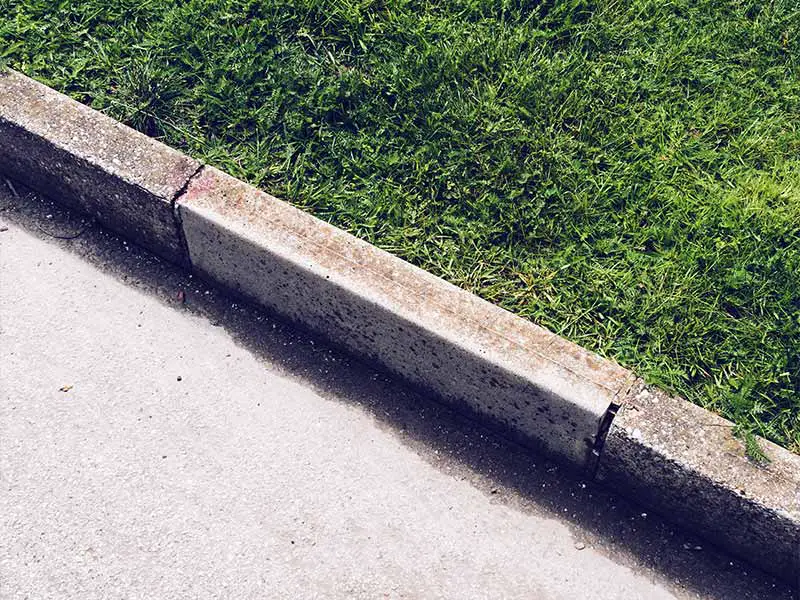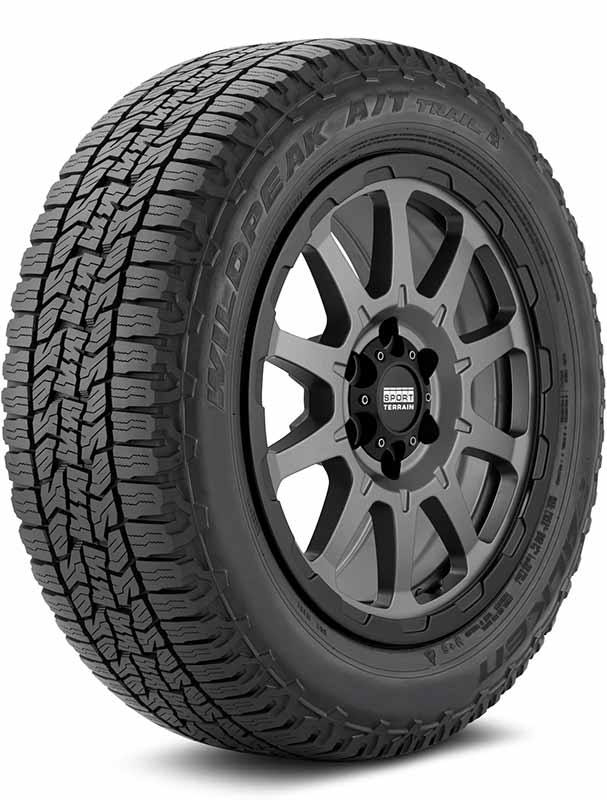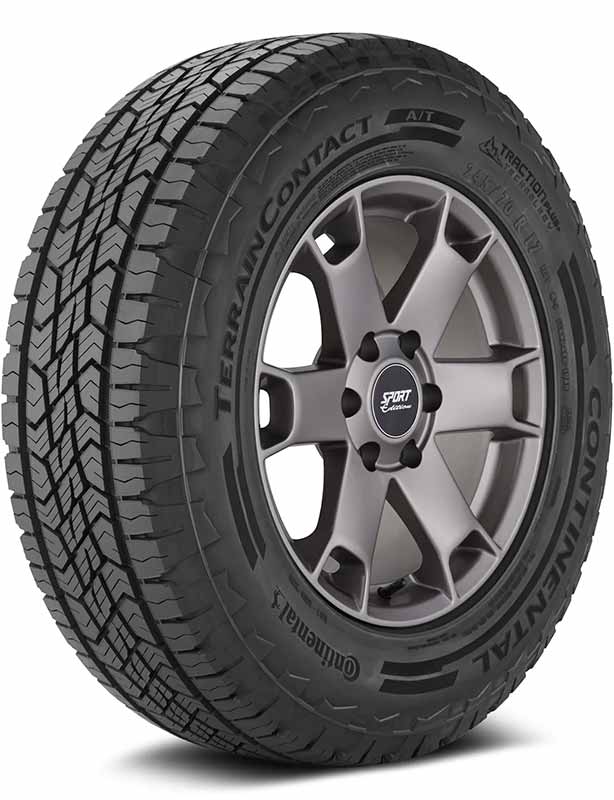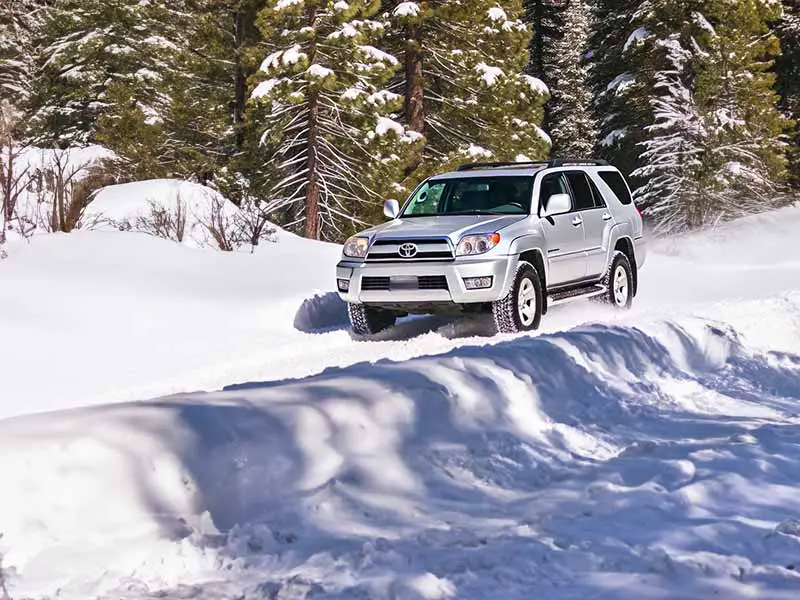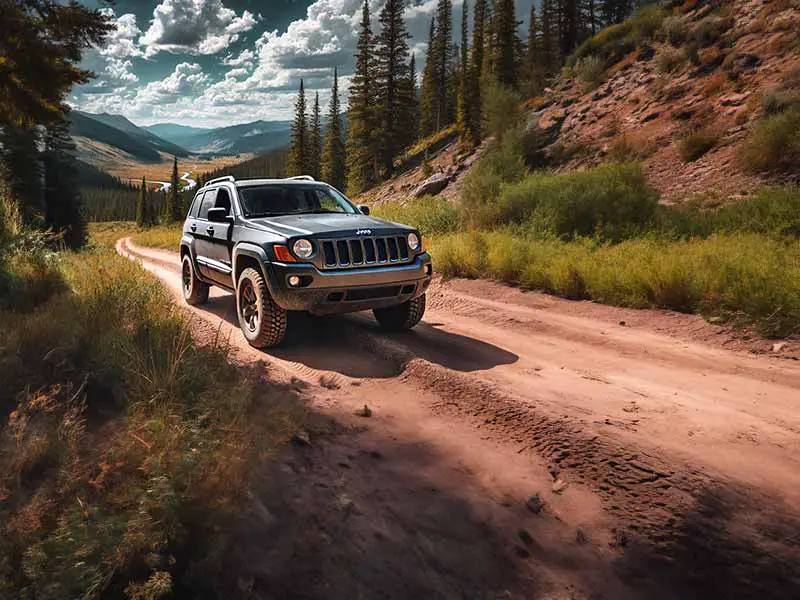Ever hit a curb and thought, “Oops! That’s not good,” only to wonder if it really isn’t good? You’re not alone. Hitting a curb, even slowly, can lead to more than just an embarrassed grin and a quick look around to see if anyone noticed.
Hit A Curb?
Hitting a curb can cause several types of damage, from the obvious like sidewall damage or a bent rim to more hidden issues like alignment problems and even frame damage. The severity of the damage typically depends on factors like speed, angle, and the type of curb involved.
In this article, we’ll dive into what can happen when you hit a curb, the immediate and hidden signs of damage you need to look for, how to properly check your vehicle after such an incident, and what steps to take if you discover any damage.
Let’s take a closer look.
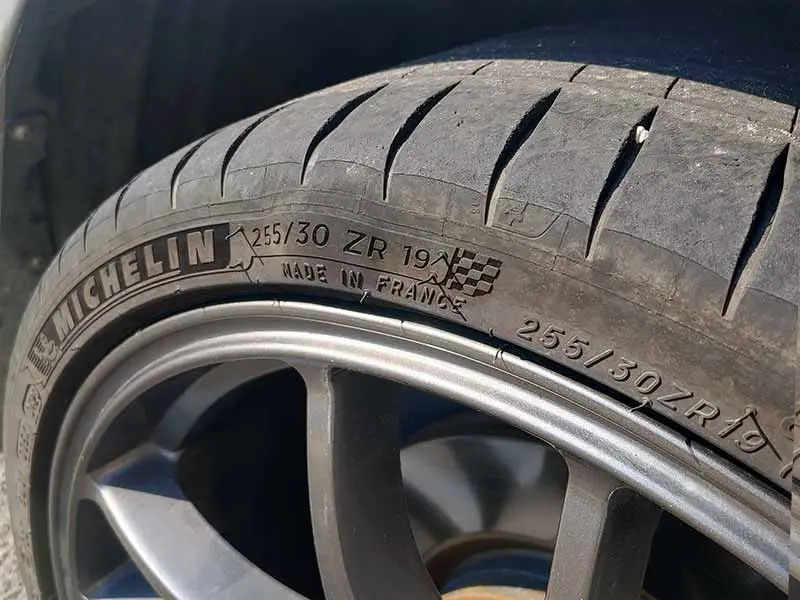
What Happens When You Hit A Curb
Let’s start with the obvious, your tires. Tires are tough, sure, but they aren’t invincible. Sidewall damage is a common result of curb contact. If you hit a curb, you might end up with a bubble in the sidewall of your tire or a nasty gash on the side. That’s not just a cosmetic problem—it’s a safety issue.
Broken Belts and Uneven Wear
Here’s why: Your tire is made of layers, like a delicious sandwich. When you hit a curb, the force can pinch those layers together. This can break the belts (the part that gives your tire its shape and strength) inside the tire. Broken belts can lead to uneven tire wear, a bumpy ride, or even a blowout. And that’s a sandwich no one wants to bite into.
Risky Rims and Wheel Damage
Moving on, let’s talk about your rims. Just like your tires, your rims aren’t designed to withstand the force of hitting a curb. This can lead to bent rims, and in some unfortunate cases, a cracked wheel. You don’t need me to tell you that driving with a cracked wheel is risky, do you?
Steering Wheel Off Center
Your car’s steering system also might be affected. After you’ve hit a curb, if you notice that your steering wheel is crooked or your car doesn’t seem to steer as smoothly as before, it could be because parts of your steering system got knocked out of alignment. This includes your control arms and tie rods. These are important parts that keep your wheels pointed in the right direction.
Suspension Components
Now, you might be thinking, “Okay, I got it. Check my tires, rims, and steering. Anything else?” Well, yes. Actually, quite a bit more. You see, hitting a curb can potentially cause damage to your vehicle’s suspension. It might also harm your fuel lines and even your exhaust system.
Frame Damage
And that’s not even mentioning the possibility of frame damage. Yes, you read that right. Hitting a curb can potentially bend your car’s frame. That might sound like something from a monster truck rally, but it’s a possibility even in an everyday vehicle like yours. Frame damage can lead to misalignment, which can lead to more uneven tire wear and even higher collision repair costs down the line.
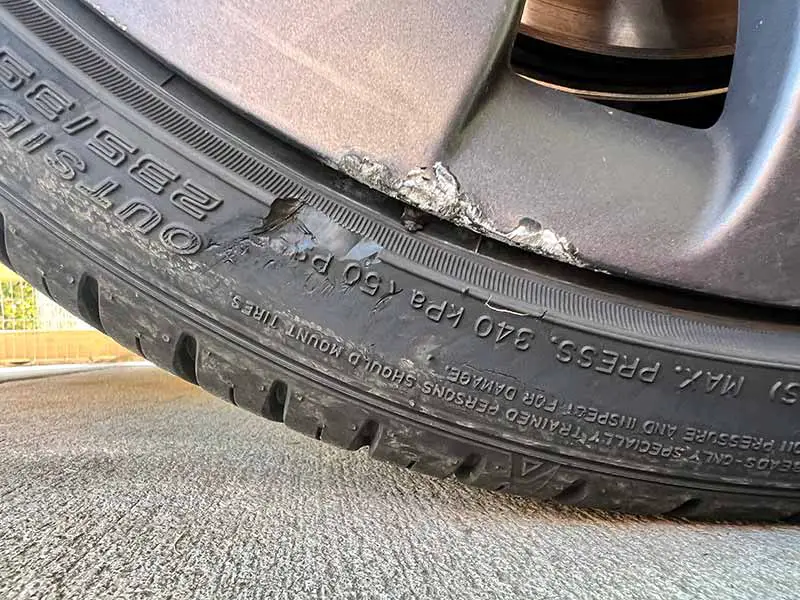
Immediate Signs of Damage After Hitting a Curb
Let’s start with some easy-to-spot signs after a curb encounter. The visible damage, you could say. These are things you can check right away, no auto mechanic degree required.
Tire Troubles: Bubbles, Gashes, and More
Look at your tires closely. Do you see a bubble in the sidewall? That’s a sign that the tire has been damaged and air is pushing against the outer layer. How about a gash on the side of the tire? If you can see the tire’s insides or even the metal threads, that’s a big red flag. It’s not safe to drive with a tire in this condition.
Bent Or Cracked Wheels
Next, take a look at your rims. Any bends or cracks there? A bent rim might not seem like a big deal, but it can make your ride less comfortable and less safe. A cracked wheel is even more serious. It’s not just a potential blowout risk; it can also affect your car’s handling.
Steering System Symptoms
Now, get behind the wheel. Is the steering wheel crooked, not sitting straight when you’re driving straight? That’s a sign that your steering system might have been affected. This is one symptom you definitely shouldn’t ignore. Steering knuckles or even the steering rack could be damaged. Although a crooked steering wheel is probably less severe and merely a bent control arm or tie rod.
Pushed-Back Wheel
Lastly, take a look at your wheel in relation to the rest of the car. Does it seem pushed back compared to the other wheels? That could indicate a problem with the suspension or the control arms.
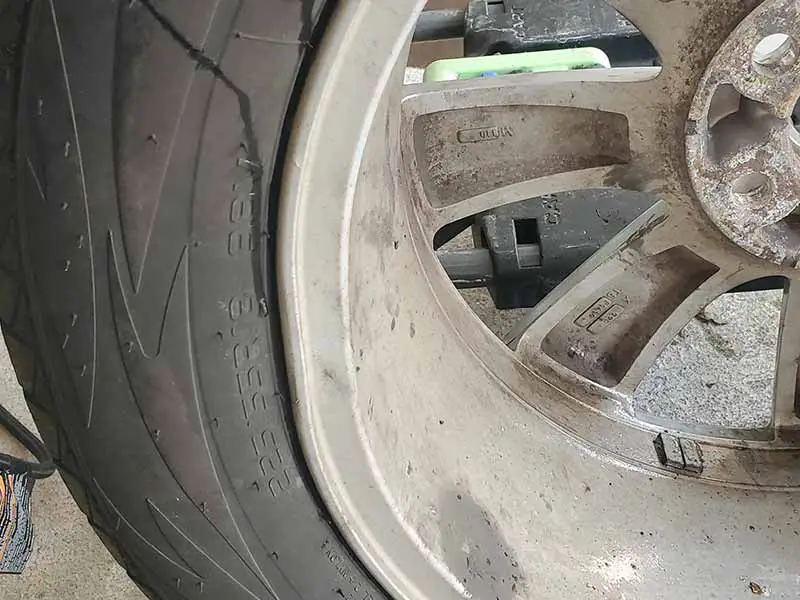
Possible Hidden Damages
Now, let’s talk about the less obvious stuff. Hidden car damage that might not show up right away. But just because you can’t see them, doesn’t mean they aren’t serious.
Suspension Damage
One of the parts of your vehicle that might get damaged when you hit a curb is your vehicle’s suspension. If your car feels bumpier than usual, or if it seems to be leaning to one side, that might be a sign of suspension damage.
Control Arms Concerns and Tie Rod Troubles
Your control arms and tie rods, part of your steering system, could also get damaged. These aren’t parts you can easily check yourself, but if you notice your vehicle isn’t handling well, or if it’s pulling to one side, these might be the culprits.
Uneven Tire Wear
Remember when we talked about broken belts in your tires? Well, another sign of this can be uneven tire wear. If you notice that one part of your tire is wearing out faster than the rest, it might be because of a broken belt.
Fuel Lines and Exhaust System Issues
Now, this might seem unlikely, but hitting a curb can also potentially damage your fuel lines and your exhaust system. If you smell gas or your exhaust sounds louder than usual, it’s definitely time to get your vehicle checked out.
Frame Damage
Last, but certainly not least, is frame damage. This is a serious issue that can affect your vehicle’s safety and performance. If your car seems to be driving unevenly or if you’re noticing unusual tire wear, this could be a sign of a bent frame.
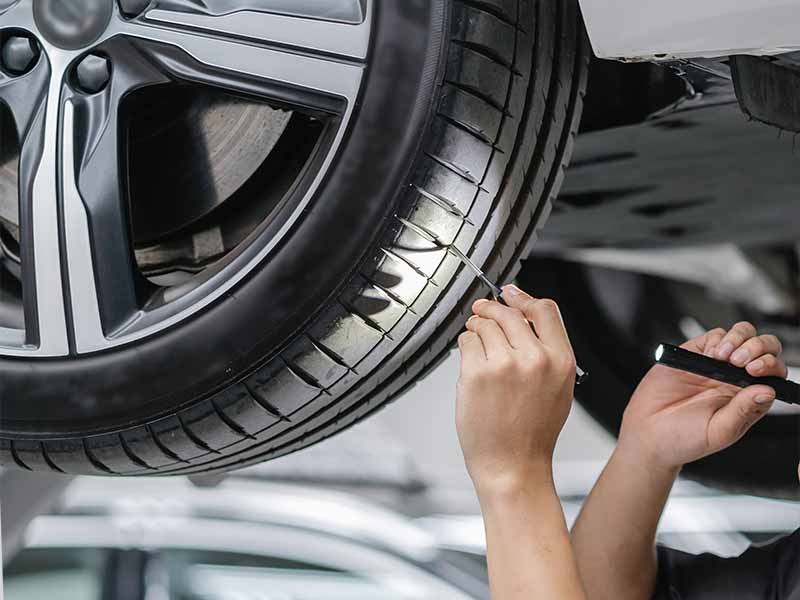
Checking for Damage
Once you’ve hit a curb, it’s crucial to inspect your vehicle for any potential damage. But how exactly do you do that? Let’s go step by step.
Tire Examination: Bubbles, Gashes, and More
Start with a close inspection of your tires. Look for any signs of sidewall damage like bubbles or gashes. These are signs that the tire has been damaged on the inside. Also, check for any cracks in the wheel itself. Remember, driving with a damaged wheel is not safe.
Bent or Cracked Rim
Check the rims of your wheels. If they’re bent or cracked, you’ll need to get them repaired or replaced. A damaged rim can cause tire damage and can affect your car’s handling.
Steering Components: Alignment Issues
Then, pay attention to your steering wheel. If it seems crooked or if your vehicle pulls to one side when you’re driving straight, these could be signs that your steering system has been knocked out of alignment. This includes the control arms and the tie rods, which are important parts that keep your wheels pointed in the right direction.
Hidden Hints: Looking Deeper
Now, onto the less obvious stuff. You’ll need to keep an eye on your vehicle over the next few days and weeks. Pay attention to how your car is handling. If it seems bumpier than usual or pulls to one side, this might be a sign of hidden damage to the suspension, control arms, or tie rods.
Also, watch for uneven tire wear. This can be a sign of a broken belt in the tire or problems with your vehicle’s alignment.
Professional Perspective: When to Seek Help
If you notice any of these issues, or if you just have a bad feeling, it’s always a good idea to get a professional to check your vehicle. They can spot problems you might miss, and they can ensure that your vehicle is safe to drive.
Resources
Below are some links you may find helpful when learning about tires
- What to look for on your suspension after hitting a curb – FCP Euro
- What kind of damage can hitting a curb cause? – Motor Biscuit
Final Thoughts
Driving away from a curb hit might feel like a victory, but it’s important to remember that not all damages are visible immediately. Hitting a curb can cause a variety of issues, from obvious tire damage and bent rims to more hidden concerns like alignment problems, suspension damage, and even potential frame damage.
Key takeaways from our deep dive into this topic include:
- Always inspect your vehicle thoroughly after hitting a curb, looking out for visible tire and rim damage, steering alignment issues, and any signs of the wheel being pushed back.
- Remember to be vigilant for hidden damages, which may not be obvious right away. Uneven tire wear, changes in your car’s handling, and even unusual smells or sounds could indicate issues with your suspension, steering system, or fuel and exhaust systems.
- If you discover any damage, get it addressed promptly. While some minor issues might be fixable at home, most require professional attention. Don’t delay seeking help, as ignoring the problem could lead to more serious issues down the line.
Remember, safety should always be your top priority. If in doubt, seek professional advice to ensure your vehicle is safe to drive. Hitting a curb might seem like a minor mishap, but understanding the potential consequences can help you take the right action and stay safe on the road.
Good luck and happy motoring.
